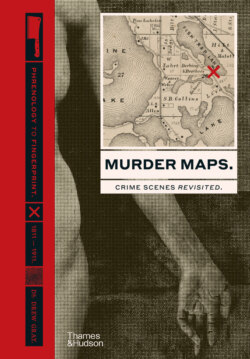Читать книгу Murder Maps - Drew Gray - Страница 9
На сайте Литреса книга снята с продажи.
Оглавление8
Criminologists and historians of crime have long agreed that there was a long-term overall decline in homicide between the medieval and the modern age. Researchers attempting to plot this decline have suggested that the growth of nation states and the development of a capitalist economy both contributed. As a society, we gradually became more ‘civilized’ and thus, so the thesis suggests, less likely to resort to violence. Conversely, as we became less physically violent as a society, we grew more fascinated by the violence carried out by the minority. Popular culture sated that interest by offering up images of sadistic killers as examples of the dark side of human nature and presented murderers as representatives of the ‘other’ at large in modern society.
Above. images from charles le brun’s a series of lithographic drawings illustrative of the relationship between the human physiognomy and that of the brute creation (1671, trans. 1827). le brun’s illustrations accompanied a lecture in which he outlined the principles of physiognomy and its stated ability to attribute personality traits to physical facial characteristics. it gave rise to the notion that if your face resembled an animal’s, then your personality
might also be similar.
Much of the interest in murder and violent crime was concentrated in the cities of the world. As the Industrial Revolution gained pace during the 19th century, people left the countryside for the crowded metropolises. Such areas became melting pots of multi-culturalism: places where fortunes were made and lost, and where new ideas were formed. Crucially, though, they also became places of social danger, associated with crime, immorality and disease. Anonymity and alienation contributed to the idea that crime and criminals were endemic. By contrast, rural areas were seen to offer an escape to a simpler, safer and more idyllic past. In fact, murders continued to occur in country areas; indeed, the more remote the area, the less likely it was that a murder would be reported, the crime solved and the killer prosecuted. In the cities, sophisticated policing systems developed alongside scientific and technological advances, increasing the detection and prosecution rates there, and forcing murderers to be ever more cunning and resourceful to avoid capture and imprisonment.
Professional policing was still a relatively new innovation in the middle of the 1800s. London’s Metropolitan Police Service was only
D.
C.
B.
A.
Horse-drawn prison wagons known as Black Marias are introduced to the London Met.
Chemist Jean Stas githat convicts Count Hippolyte
ves evidence Visart de Bocarmé of murder. Allan Pinkerton establishes his own private detective agency.
Ludwig Teichmann develops a test to determine the presence of blood in a stain. Louis François Étienne B
ergeret establishes time of death using forensic entomolo. Jean Louis L
assaigne publishes the results of his systematic microscopic studies of hair. The New York City Police
Department establishes a ‘rogues’ gallery’ of photographic records wn criminals.
velop a spectroscopic method of identifying unknown materials.
of kno Robert Bunsen and Gustav Kirchhoff de
18501850185018531855185718581859
pig-faced man.
pig for comparison.
fox-faced man.
fox for comparison.
INTRODUCTION.
